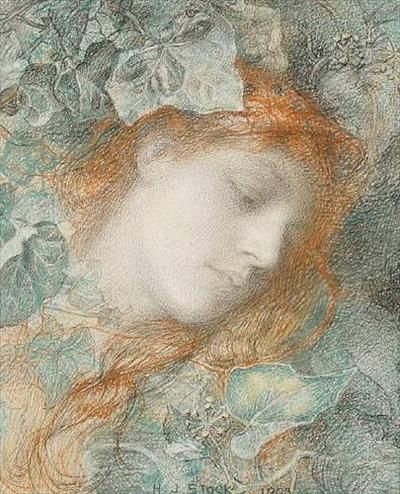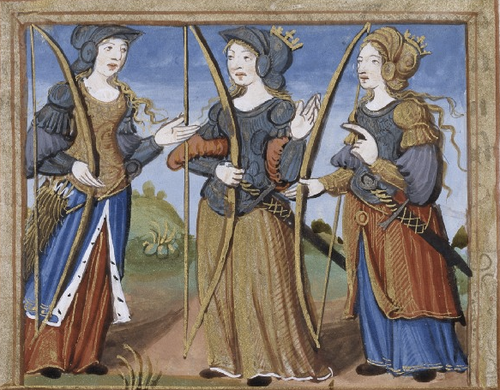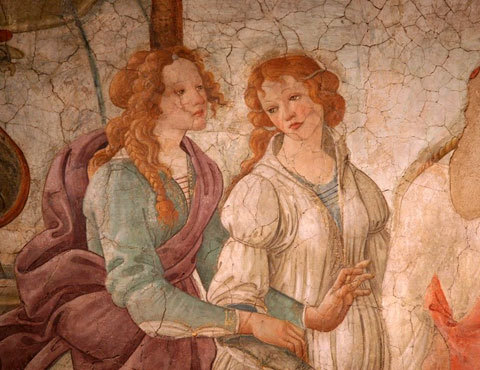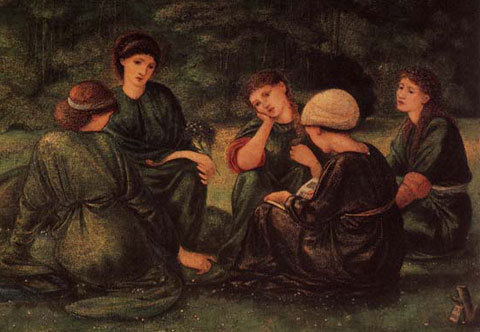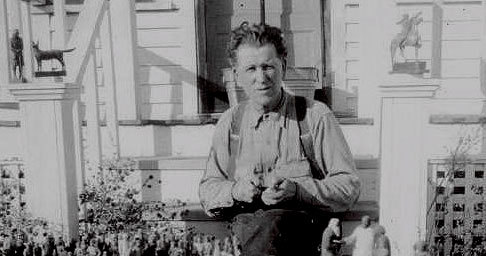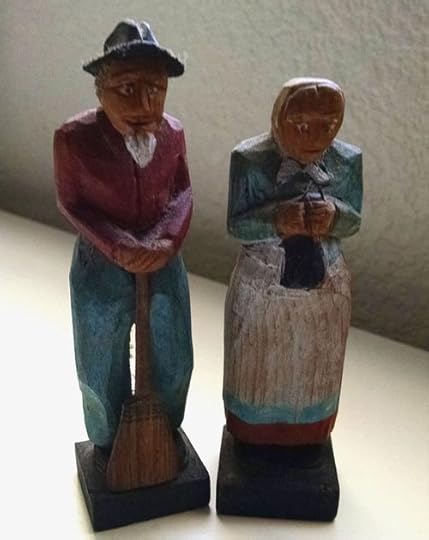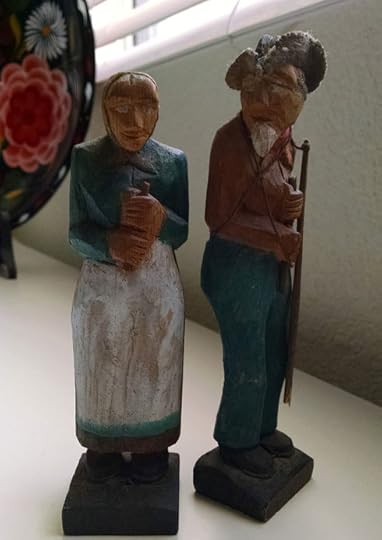Midori Snyder's Blog, page 37
October 13, 2015
A Southwest Madonna Carved by Pierre Menager
I received a most wonderful gift today in the mail from Pinky Werner, granddaughter to Oscar Huber, who once owned the Madrid Mines and was the driving force behind the small coal town of Madrid, New Mexico of the 1920s through to the early 50s. I've written a good deal about Madrid throughout the blog -- partly because my grandfather Pierre Menager worked as an artist to help create the famous life-sized (and even larger than life-sized in some cases) dioramas for the Madrid Christmas Light Show. But so much of what I have learned about Madrid has come from the generosity of Pinky Werner, who when I lamented on the blog that I had no photos of Madrid's light shows or my grandfather's work from the 40s on the project, she sent me a disk with close to 700 photographs from the Huber Family albums on all aspects of life in Madrid between the 20s and 40s.
Pretty much gobsmacked by the sudden wealth of materials -- much of it unseen by anyone but the Huber Family, I started posting about life in Madrid, including more detailed posts about the Christmas Light Shows, the Miners and their work, their play at baseball, and summer holidays. (You can find links to the albums in the left-sidebar) These posts were discovered by Jerry Dimass -- who grew up in Madrid until he entered the Navy with his twin during WWII. Jerry has generously shared his biography on the blog, and best of all, answered as many of the questions in the comments to those younger generations interested in learning about their great grandparents and grandparents lives in Madrid. Such a treat to be at this wonderful crossroad -- made possible by the internet.
But today, Pinky, in thanks for having made these photos public (and there are still more posts to come) sent me this gorgeous Madonna carved by my grandfather Pierre Menager -- who was a friend of the Huber family, and admired, both for his tricksterish nature, but also for the stunning work he did on the Light Show dioramas. I can't begin to thank her enough for once more thinking of me, and for sending this lovely Madonna, with her peaceful, smiling baby to me. I feel so blessed and grateful.
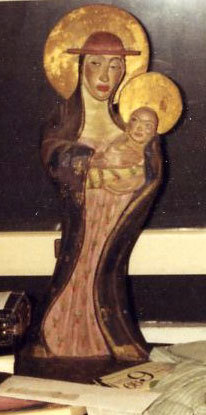 And here is a small side note: another reason I am so grateful to receive this Madonna by Pierre is because in 1971, a Madonna which Pierre had given my family and which I loved as a child, was stolen from the apartment of a friend in Chicago -- as my mother had placed the sculptures with her friend while she traveled abroad, ironically to keep them safe. If you see her, please let me know. I am willing to believe they are still in Chicago, somewhere. This is the only photo I have of her. She was painted with great care -- gold gilt on her and the baby Jesus' halos. She is about two feet tall and the detail on her garments, the baby's swaddling are really lovely. Sigh...I would so love to see her again.
And here is a small side note: another reason I am so grateful to receive this Madonna by Pierre is because in 1971, a Madonna which Pierre had given my family and which I loved as a child, was stolen from the apartment of a friend in Chicago -- as my mother had placed the sculptures with her friend while she traveled abroad, ironically to keep them safe. If you see her, please let me know. I am willing to believe they are still in Chicago, somewhere. This is the only photo I have of her. She was painted with great care -- gold gilt on her and the baby Jesus' halos. She is about two feet tall and the detail on her garments, the baby's swaddling are really lovely. Sigh...I would so love to see her again.
October 1, 2015
Slowing Down and Sleeping Baby
The last few weeks I have been writing much more slowly as I have a new partner -- my sweet granddaughter who seems to prefer to take her afternoon naps snuggled on my chest on the bed. Forced into quiet and stillness, I get to read books that have been on my mind for a while now ...like a fabulous triple version of the Mande epic Sunjata (performed by Bamba Suso and Banna Kanute, edited and translated by Gordon Innes) which was (and probably still is) performed by griots. It also turns out that among my father's field recordings from the 1960s, there may be a recorded a performance of the epic. I am waiting to hear back from the University of Washington where I sent all of his tapes.
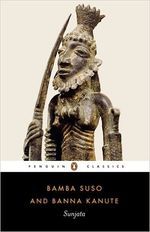 Due to my new duties, helping with childcare so that my daughter can work on her graduate studies, posting will be a bit slow for awhile-- though I tend to keep facebook up more or less reasonably. I have a lot on my mind though from these slow afternoons -- which give some breathing space in an otherwise hectic day with this lovely girl, so I do hope to post as I often as time allows.
Due to my new duties, helping with childcare so that my daughter can work on her graduate studies, posting will be a bit slow for awhile-- though I tend to keep facebook up more or less reasonably. I have a lot on my mind though from these slow afternoons -- which give some breathing space in an otherwise hectic day with this lovely girl, so I do hope to post as I often as time allows.
September 20, 2015
Sunday Marginalia: The Four Winds
Konrad Kyeser, Bellifortis, Germany 15th century (Besanc��on, Biblioth��que municipale, ms. 1360, fol. 4v)
September 10, 2015
Two New Gorgeous Poems from Marly Youmans
I am so excited to share two new poems from author and poet Marly Youmans (whose previous work I have reviewed here and here). Recently, I realized that the Journal of Mythic Arts Poetry archives was incomplete without something from Marly, whose work in mythic and fairy tale poetry is really stunning. I asked, and she obliged by sending in these two exquisite poems: Night Journey from Kingfisher and Prothalamion for Linnet, part of a collection of poems inspired by the forms of oriki -- African praise poems.
In "Prothalamion for Linnet," Marly offers a unique perspective on the Child Ballad "Tam Lin." She begins the poem on familiar ground, recounting in lush and sensual imagery the brief but fertile meeting between Janet and Tam Lin in the woods, and the subsequent violence of freeing him from his enchantment. But Marly moves the story into an unexpected place with the focus on Linnet, the now-grown child that who "was in the rose womb/ The pollen bed of Janet, her mother," a vital force "there, rose-lit, unseen, under /The seeking, pilfering, fey-tinged/ Fingertips of Tam Lin," and later, a formed child in the womb, she is present again at the confrontation with Fairy Queen and the transformations of Tam Lin, from beastly forms to man. As young woman, returning with her parents to wild woods, she is the intersection of human and fantastic, of the castle and the forest, of the idea and its creation into story.
"At dawn, Linnet dreamed a stream,
A certain, sure stream,
A stream threading silver through the forest,
Silver bedded below leaves of Carterhaugh.
Girls must not go there, not even with a hand
Held by a mother on the right, not
Even with a hand held by a father at left.
Girls from the kitchen must not go there,
Girls from the castle laundry must not go there,
Girls from the village must not go there,
Even girls from the city must not go there,
Not even with needle and scissors for swords,
Not even with polished serving trays for shields.
But this very morning Linnet goes there.
Linnet the storyteller, Linnet the singer of tales."
The second poem, "Journey from Kingfisher," is a song of praise for the poet who is "Not jailed princess but woman/" and who with "With a candle and a notebook, bends/Above the waves sloshing against the stones/ Above the paths sprawling, spraddling from shore" whose creative will flows out from the tower, to reach the fertile ground and "Out for distance, for horizon/ Her hands twisting words into a distaff, a staff/ Pulling words like clay into a potter���s, a beggar���s bowl/Hammering them into the shape of a pail." Here, most wonderfully, stories and tales are lifted up from the elements and nature, "Tumbling, slipping, sailing/From the edge of a world made of words/ Trusting that the tingling soles, bare in summer/ Booted in winter, will find/ Ground, that gold/ Is meant to fill a pail..." There are so many wonderful fairy tale references re-configured to describe the tangible act of creating stories with the intangible nature of the creative process.
Once again, many thanks to Marly for sharing these terrific poems with JoMA readers!
Art: Henry John Stock, "Portrait of a Girl Surrounded by Ivy Leaves," and Odilon Redon, "Light and Shadow, 1900.
September 8, 2015
Banished Brides Return With Longbows
Another earlier post from this spring brought forward to join up with my thinking about this interesting group of women. But maybe also about the rites of passage of marriage, especially as an site of enormous social tension in society. Not entirely sure where this is all going to fit into the novel and into a Mythcon presentation -- but it will certainly be part of it. It might be that the presentation is as much an analysis of a body of narratives as it is about how these tales are translated into contemporary fictional writing. Turning my head inside out.
I found this lovely image --most likely of the great warrior Queen, Matilda of Tuscany and thought how familiar she looks, banded together with her sisters-in-arms, swords and longbows, arrows and beautiful dresses. Though Matilda was certainly far more powerful and effective as a warrior queen, this image seemed like a perfect illustration for a band of querulous brides that appear in Zizola's novel.
More than awhile ago, I wrote about the peculiar figure of the "banished bride" in folktales and ballads --- the bride who unwittingly stands in for the heroine until she can extricate herself from whatever impediment has kept her temporarily from her intended groom. The poor dear is then banished at the altar -- sent home, and even though financially compensated, her honor and reputation dimmed. Here's what I wrote in that post:
"So what happens to those banished brides -- not the deceitful and disguised brides, they always meet with bad ends -- but those brides like poor Anne of Cleves determined too ugly (and "too swarthy") by Henry the Eighth and sent home as unsuitable. Since we never get their side of the story, or the what-ever-happened-to-that-young-woman?, the writer in me couldn't resist wondering what those women might do to reclaim themselves if given a chance in a novel. A young writer I know suggested they went home with a huge sigh of relief -- imagining that such weddings to total strangers would have been scary enough to contemplate.
But from a narrative point of view, that's no fun -- especially after reading the Lost Sicilian Folk and Fairy Tales of Laura Gonzenbach, I know that the Italians -- or at least the Sicilians-- are firm believers in spectacular revenge. So I couldn't help but think of a sisterhood of Banished Brides coming together and taking their fury on the road to extract some form of punishing compensation. A band of marauding almost-brides offering to my young heroine roadside companionship and rancorous cautionary tales about men in general. (Although I suspect the trickster traveling with her would not be able to resist the temptation of meddling with those dangerous women.) Well...there's a few chapters to meditate on and then to write."
Queen Matilda was certainly no banished bride -- though she did have an awful marriage to a stepbrother -- but she seems to have compensated for all the short comings of an unhappy marriage by becoming a highly effective military commander and fighter. All in the 12th century, which is pretty remarkable.
September 2, 2015
The Rejected Brides of Folk Tales.
This is a reposting of an earlier post on the folk tales and others from Laura Gonzenbach's collections and seemed a good one to follow on the heels of earlier notes. The novel and the Mythcon 47 seem to be taking shape together -- though, it does make me realize how long I have been chewing on the leather of this tale. I also want to reference another post on the banished bride I wrote about earlier this year -- a variant of the women below.
Lately, I have been reading a lot of Italian fairy tales as a kind of inspiration and preparation for the new novel I am working on, a companion to The Innamorati. As the plot is a renaissance road trip with a young woman in search of herself and her trickster companion (to create a little drama along the way), I have been imagining who she might encounter as she trudges southward from Tuscany in the north towards Calabria at the heel of Italy's boot.
Among the fairy tales I have been reading there appears a creature who is rarely ever seen for she is merely a place holder in the climatic tension of the story's finale: she is the bride the Prince almost marries, because he is too foolish, too enchanted, or too impatient (not waiting those seven years) and impulsively plans a wedding with the wrong woman. Of course, the heroine bride arrives in the nick of time, challenging the Prince to recall his vows of love. The Prince is chastened and then furious, turning to the almost bride (and sometimes just married bride) and denouncing her -- as if it were her fault he screwed up. And she is summarily packed off to her home without fanfare. In one of my favorite ballads, Lord Bateman, the bride's mother complains mightily at the affront to her daughter (of whom we never hear a peep). But Lord Bateman now emboldened by the arrival of his true love, "pounded his fist on the table and he broke it in pieces one, two three, saying I'll forsake all for the Turkish lady, she has crossed the whole wide world for me." To be fair, Lord Bateman does financially compensate the banished bride -- but still, it has to sting.
So what happens to those banished brides -- not the deceitful and disguised brides, they always meet with bad ends -- but those brides like poor Anne of Cleves determined too ugly (and "too swarthy") by Henry the Eighth and sent home as unsuitable. Since we never get their side of the story, or the what-ever-happened-to-that-young-woman?, the writer in me couldn't resist wondering what those women might do to reclaim themselves if given a chance in a novel. A young writer I know suggested they went home with a huge sigh of relief -- imagining that such weddings to total strangers would have been scary enough to contemplate.
But from a narrative point of view, that's no fun -- especially after reading the Lost Sicilian Folk and Fairy Tales of Laura Gonzenbach, I know that the Italians -- or at least the Sicilians-- are firm believers in spectacular revenge. So I couldn't help but think of a sisterhood of Banished Brides coming together and taking their fury on the road to extract some form of punishing compensation. A band of marauding almost-brides offering to my young heroine roadside companionship and rancorous cautionary tales about men in general. (Although I suspect the trickster traveling with her would not be able to resist the temptation of meddling with those dangerous women.) Well...there's a few chapters to meditate on and then to write.
Art in order from top to bottom: John Bauer, Edward Burnes Jones, Sandro Botticelli, and Artemisia Gentileschi
September 1, 2015
Laura Gonzenbach: Sicilian Folk and Fairy Tales
Research notes from this fabulous collection of tales: Beautiful Angiola, The Lost Sicilian Folk and Fairy Tales of Laura Gonzenbach, edited and translated by Jack Zipes.
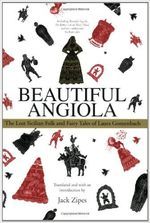 Influenced Thomas Crane, Italian Popular Tales (1885) Laura Gozenbach's collection is unique -- collected from the mouths of Sicilian peasant and lower class women -- representing their point of view on the world and the realities of their lives. Her work as a collector stands in stark contrast to highly stylized and censored work of B.Grimm. Gonzenbach did not purge tales of their sexual inferences, brutality, violence, and frankness. She had spent much of her life in Sicily so she was very familiar with the culture. Born in Messina, Sicily, 1842. Swiss-German parents. Educated by her older sister Magdalena-- after their mother's death -- early feminist. Gozenbach was fluent in at least four languages, including Sicilian dialects. She worked to be faithful to the tales --- writing them down as she heard them, retaining for the most part the oral mode of story telling.
Influenced Thomas Crane, Italian Popular Tales (1885) Laura Gozenbach's collection is unique -- collected from the mouths of Sicilian peasant and lower class women -- representing their point of view on the world and the realities of their lives. Her work as a collector stands in stark contrast to highly stylized and censored work of B.Grimm. Gonzenbach did not purge tales of their sexual inferences, brutality, violence, and frankness. She had spent much of her life in Sicily so she was very familiar with the culture. Born in Messina, Sicily, 1842. Swiss-German parents. Educated by her older sister Magdalena-- after their mother's death -- early feminist. Gozenbach was fluent in at least four languages, including Sicilian dialects. She worked to be faithful to the tales --- writing them down as she heard them, retaining for the most part the oral mode of story telling.
The tales have a distinctly feminist and lower class perspective as women were the prominent story tellers in Sicilian tradition.Re-read the versions of The Story of Three Sisters -- Zipe's comparison of Morganti's and Gozenbach's. Violent, vengeful...very Sicilian. Interesting differences between them. And there is an even greater contrast with the more literary interpretation by Calvino in Italian Folktales, in his version "Three Princesses Wed to Passersby" -- which forms part of the skeleton of the novel. Here the emphasis is on the marriage of the sister bride to the fantastic, giving the story a different kind of female agency.
Future reference: *Customs and Habits of the Sicilian Peasants by Slavatore Salomone-Marino. 1981
Photo from National Geographic Collection: Sicilian Girl, 1897
August 26, 2015
Happy International Dog's Day.
So it's true -- every dog has his day. And here's a little celebration of those furry-faced, cold snouts, and sweet eyed dogs that come into our lives and make them better. I have to post this grizzled guy because I have known him now for 11 years and love him. Enjoy your day Buju -- extra cookies!
And I also want to share the recent work of photographer and artist Rafael Mantesso -- who when his wife left him with nothing but a white bulldog named Jimmy, he found a new inspiration in the wonderful mug and agreeable nature of his dog to provide him with endless humor and inspiration. and you can find updates on Instagram. Here are a few of the wonderful photos:
August 24, 2015
The Primitive Art of Ole Olson
Among my family treasures from the farm at these small hand carved and painted figures from a man known in Valley City as Ole Olson, a Norwegian immigrant to North Dakota. He served in WWI, and when he returned he married once, lived rather unhappily it seems and without offspring, and when his wife died, never remarried. A confirmed bachelor and farmer who spent his free time whittling small carvings. People paid him -- though he didn't care about the money, and after he died many checks were discovered uncashed in a drawer. He painted his figures and signed them as "Ole the Hermit." (You can read more about .)
These figures have survived a good deal of tribulation over the years -- and I am grateful to have them. My grandmother Jeanette Westergaard purchased most of them, but it's possible that my great-grandmother purchased some of them too. They were simple figures -- farmers and farm-wives -- and this unusual among his normal work, a pair of African Americans figures, as I wonder if he ever even saw rural African Americans in North Dakota. They are rough hewn, though painted with some delicacy and he had a kind of template for making many of the same, But handcrafted work always allows for slight variations, so they remain, each charming in their own way.
August 13, 2015
I've Been Invited to Be the Guest of Honor At Mythcon 47, San Antonio TX, 2016
I received an invitation this morning to be a Guest of Honor for Mythcon 47 next year in San Antonio, TX. I am very excited to have been asked and am so looking forward to the event. I will be re-reading my C.S. Lewis, Mythologies, Tolkien, and a whole bunch of other authors and works over this coming year in preparation. I am actually glad to have a reason and an opportunity to read all these wonderful works again, and to be able to share in some great conversations next year. Of course, I am also nervous as hell...already.
Mythcon 47
San Antonio,Texas, August 5-8, 2016
Faces of Mythology: Ancient, Medieval, and Modern
The theme of the 47th annual Mythopoeic Conference is inspired by the 60th anniversary of C.S. Lewis���s Till We Have Faces and The Last Battle; this year we focus on the mythology that has shaped and ���given faces��� to so many of our beloved characters, ranging from the myths of the Ancient Greeks to the legends of the Middle Ages and even to the modern mythology of the American Southwest. Similarly, this mythological influence is also evident in the works of many of our favorite mythopoeic authors, from J.R.R. Tolkien to J.K. Rowling, from Ursula K. Le Guin to Alan Garner, and many, many more.
Midori Snyder's Blog
- Midori Snyder's profile
- 87 followers







